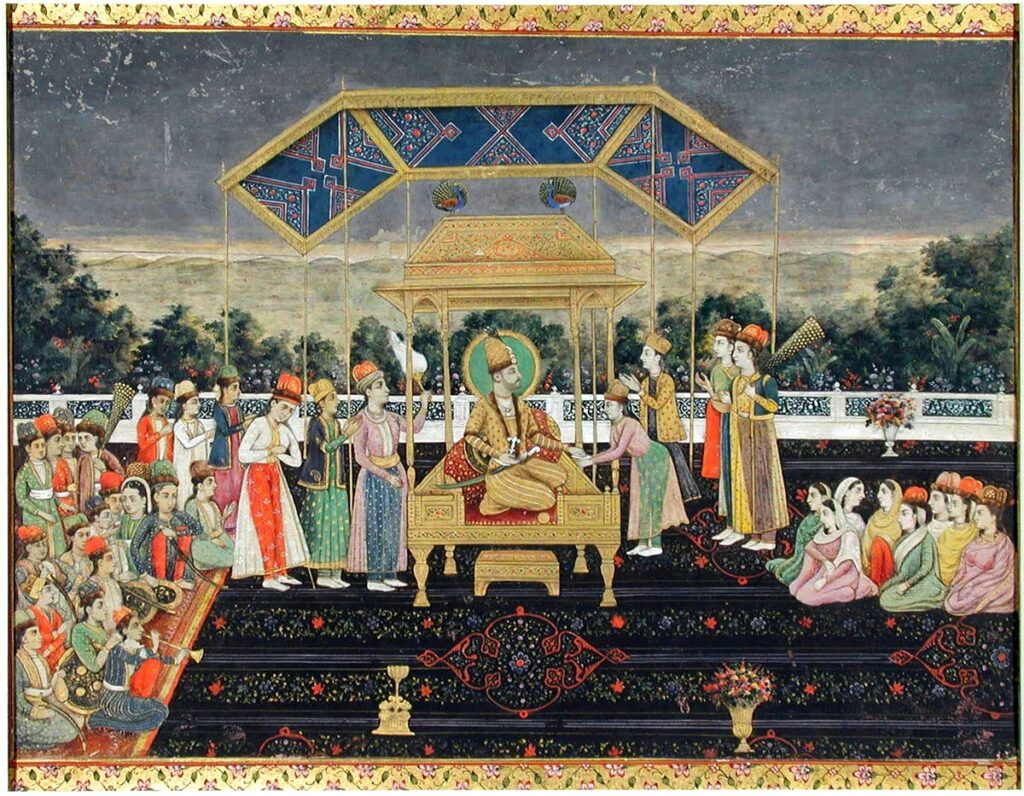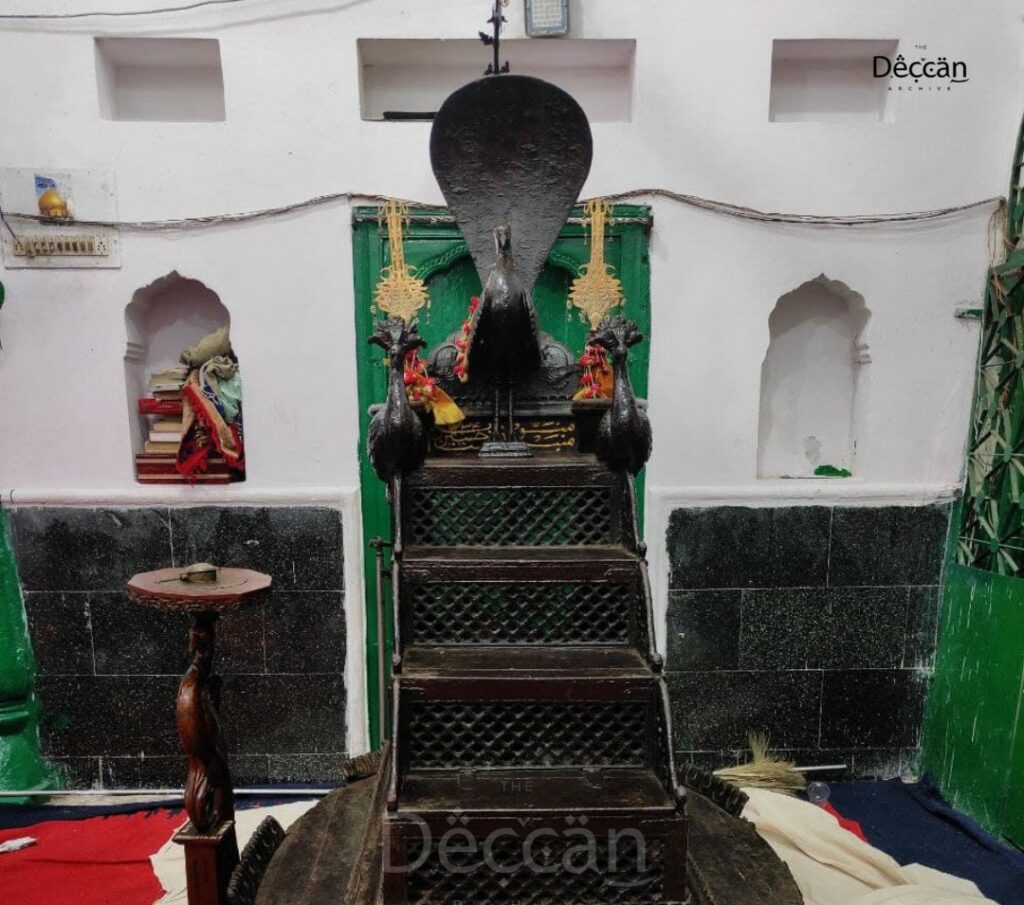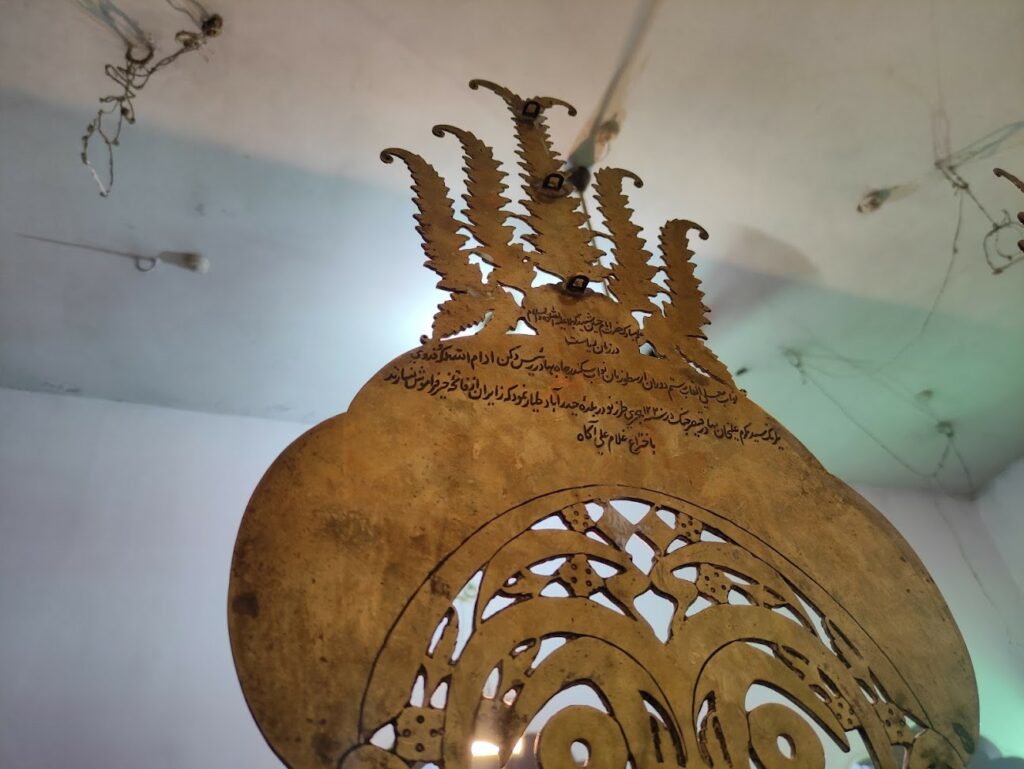By Mohd. Sibghatullah
Many of us have probably read about how fabulous Shah Jahan’s embellished Peacock Throne was, yet there exists no remains of it or even an accurate representation as it was destroyed by the Persian ruler Nadir Shah. Most paintings depict the peacock throne to be a pavilion with chhatris flanked by peacocks on the crown.

However, this Muharram, I discovered that there exists an accurate replica of the Peacock Throne, that too in Hyderabad. A replica of the Peacock Throne was built during the period of the Sayyid Brothers of the Mughal Empire (1526-1857) and it has survived through generations in the Lohe Ki Kaman Ashurkhana at Purani Haveli, built in the year 1060 Hijri (1650 CE) during the Qutb Shahi dynasty (1518-1687).

(Ashurkhanas are built by Shia Muslims, to mourn the death of Imam Hussain, who was killed in the battle of Karbala in 680 CE on the 10th of Muharram, which is Ashura. He was the son of Imam Ali, the son-in-law and cousin of the Prophet Mohammed. Shia Muslims, being followers of Imam Ali, observe the death of Imam Hussain every year during the month of Muharram. Alams or sacred symbols are placed in Ashurkhanas for the purpose).
The Qutb Shahi dynasty, established in 1518 by Sultan Quli Qutb Shah (a Persian of Turkish descent), built the Golconda fort first and later founded Hyderabad in 1591. It was a contemporary of the Mughal empire, which was established by Babur in 1526. (The Mughal king Aurangzeb conquered and eventually destroyed Hyderabad in 1687, in an eight month long war with Sultan Abul Hasan Tana Shah here)
The throne is unlike any other representation that we see in popular narratives. The entrance gate to the Ashurkhana has a rose wooden tablet engraved with verses from the Holy Quran, and the date of the building’s construction.
This Ashurkhana houses alams (standards) of a unique type which were installed by Nawab Sayyid Mukarram Ali Khan (Qaisar Jang), son of Nawab Sayyid Muhammad Ali Khan (Azim Jang Azim Ud-Daula) the grandson of the famous general of the Mughal emperor Farrukhsiyar, Sayyid Hussain Ali Khan (Amiral Umra), one of the kingmakers Sayyid Brothers during the Mughal period.

Shah Jahan’s chronicler Inayat Khan describes the throne as:
“The Nauroz of the year 1044 fell on the ‘Id-i fitr, when His Majesty was to take his seat on the new jeweled throne. This gorgeous structure, with a canopy supported on twelve pillars, measured three yards and a half in length, two and a half in breadth, and five in height, from the flight of steps to the overhanging dome.
On his Majesty’s accession to the throne, he had commanded that eighty-six lakhs worth of gems and precious stones, and a diamond worth fourteen lakhs, which together make a crore of rupees as money is reckoned in Hindustan, should be used in its decoration. It was completed in seven years, and among the precious stones was a ruby worth a lakh of rupees that Shah ‘Abbas Safavi had sent to the late Emperor, on which were inscribed the names of the great Timur Sahih-Kiran, etc.”
The Alams installed in the Ashoorkhana Khaiser Jung which dates back to the era of Nawab Sikandar Jah Bahadur Nizam III. Each alam has a unique hurufi – bektashi zoomorphic calligraphy at the centre surrounded by the names of the imams.
The Throne has 4 steps leading to a seat flanked by peacocks on two sides and guarded by a larger peacock on the rear. It is known as Takht/Minbar e Taus (Throne of Peacock) locally and is displayed during the first ten days of Muharram.
The rear of the pulpit has inscriptions that speak about it being a replica of the infamous Takht e Taus. To see the pulpit and other relics of the Ashurkhana Sayyid Jamshed Ali Khan you must visit the place in the first ten days of Muharram when it is thronged by thousands from across the world.
(The author is a Hyderabad-based architecture student who researches and writes on Deccan history. He also runs Deccan Archive, an Instagram page, along with his peers.)

